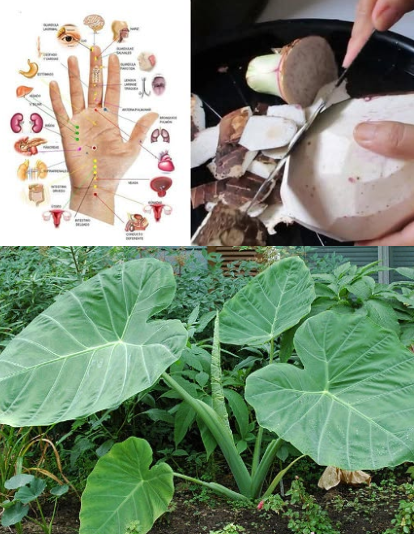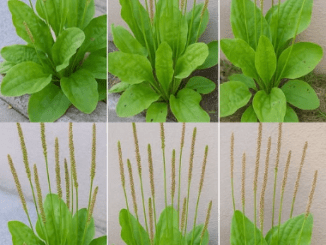
Let’s talk about a humble root that’s quietly changing the game—taro. You might’ve walked past it at the market without a second glance, but don’t let its rugged exterior fool you. Taro, or Colocasia esculenta, is more than just a starchy side dish. It’s a nutritional powerhouse, a culinary chameleon, and a time-tested healer. Curious how a plant this simple can be so incredible? Let’s dig in.
A Root with Deep Roots: The History of Taro
Imagine a crop so old that it predates written language. That’s taro. With over 10,000 years of cultivation under its belt, taro originated in Southeast Asia and spread across the Pacific Islands, Africa, and the Caribbean. In Hawaii, it’s known as kalo, while in India and the Caribbean, it’s arbi and dasheen. No matter what it’s called, taro has been a survival staple—thriving in harsh climates, feeding families, and even holding spiritual significance in many cultures.
Why Taro Root Deserves Superfood Status
You don’t need a degree in nutrition to appreciate taro’s benefits. It’s packed with the kind of nutrients your body craves—all wrapped up in a gluten-free, fat-light, earthy package.
- Slow-Burning Carbs for Lasting Energy
Taro gives your body complex carbohydrates that release energy gradually, meaning no sugar spikes or energy crashes. Perfect for busy mornings or post-workout fuel. - Fiber That Does the Heavy Lifting
Its rich fiber content aids digestion, keeps you feeling full longer, and helps regulate blood sugar. That’s a win-win for your gut and waistline. - Vitamins and Minerals Galore
Taro is a great source of potassium, magnesium, vitamin C, vitamin E, and manganese. These nutrients boost immunity, support bone health, and maintain heart rhythm. - Zero Gluten, All the Good Stuff
If gluten’s not your friend, taro is. It’s naturally gluten-free and versatile enough to replace wheat in all kinds of dishes.
How to Cook Taro Like a Pro
The best thing about taro? It works with almost anything. Whether you love spicy curries or sweet desserts, there’s a place for taro on your plate.
- Boiled or Steamed
Simple and nutrient-packed. Serve it with a sprinkle of salt or a zesty dipping sauce. - Fried or Roasted
Crispy taro chips or wedges? Yes, please. They’re like potatoes—but better. - Mashed Taro
Creamy, nutty, and surprisingly satisfying. Try it instead of mashed potatoes with a dash of garlic. - In Curries or Soups
Taro soaks up flavor like a sponge. Add it to spicy coconut-based dishes or chunky vegetable stews. - As a Dessert
From taro ice cream to mochi and pudding, its natural sweetness shines in treats.
👉 Heads up: Always cook taro thoroughly! Raw taro contains calcium oxalate crystals that can irritate your mouth and throat.
Video : Taro Root: Benefits and Uses
Don’t Skip the Leaves: Taro Greens Are Nutrient Gold
Most people toss the leaves. Big mistake. Taro leaves are rich in vitamins A and C, iron, and calcium. Cook them right, and they’ll taste just as good as they are good for you.
- Try Laing
A Filipino dish made by simmering taro leaves in coconut milk, garlic, and chili. It’s creamy, spicy, and unforgettable. - Stuff Them
Use taro leaves like grape leaves—fill them with seasoned rice, quinoa, or ground meat. - Toss Them in Stews
Add them at the end of cooking to bulk up soups with extra nutrients and flavor.
🔔 Just like the root, the leaves must be cooked properly to be safe and tasty.
Surprising Health Benefits of Taro
Beyond its amazing taste, taro can seriously boost your wellness game.
- Heart Hero
Taro’s potassium helps balance sodium levels and lower blood pressure. Its fiber helps reduce cholesterol—your heart will thank you. - Diabetes-Friendly
Thanks to its low glycemic index and resistant starch, taro helps control blood sugar and reduces insulin spikes. - Immune Booster
With antioxidants like vitamin E and beta-carotene, taro helps your body fight off illness and inflammation. - Glowing Skin
Vitamin E supports skin healing and can help reduce fine lines. Who needs fancy creams?
Traditional Wisdom Meets Modern Science
Taro isn’t just a kitchen staple—it’s a healing ally. Cultures across the globe have trusted taro for centuries.
- In Ayurveda, taro paste is applied to skin issues and wounds.
- In the Pacific Islands, it’s considered a sacred plant symbolizing life, ancestry, and prosperity.
- In Traditional Chinese Medicine, taro strengthens the spleen and supports digestion.
It’s more than food—it’s tradition, legacy, and wellness all rolled into one.
Sustainability: Taro’s Secret Superpower
Taro grows where other crops struggle. Wetlands? No problem. Poor soil? It thrives. It’s one of the most eco-friendly crops out there—minimal waste, low input, and high output. Plus, every part of the plant has a purpose, making it a sustainability star.
How to Add Taro to Your Diet Today
If you’re new to taro, keep it simple at first. Try boiled taro cubes as a side, or mash it with butter and herbs. Love baking? Swap some of your flour with taro flour for a gluten-free twist. Craving dessert? Taro bubble tea or pudding is always a hit.
And once you’ve got the basics down, don’t be afraid to experiment—because this root can handle it all.
Video : 5 Amazing Heath Benefits Of Taro Root
Conclusion: The Ultimate Root for a Modern Lifestyle
Taro isn’t just some exotic root hidden in health stores—it’s an ancient gem with modern appeal. It nourishes your body, respects the planet, and connects us to centuries of culture and healing. Whether you’re looking to clean up your diet, spice up your meals, or simply try something new, taro is the answer hiding in plain sight.
So, next time you spot that brown, hairy root or those big green leaves at the store, grab them with confidence. Because with taro, you’re not just eating—you’re stepping into a story 10,000 years in the making.


